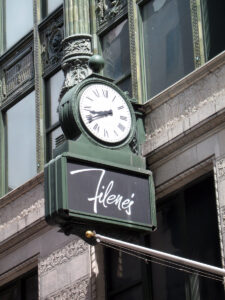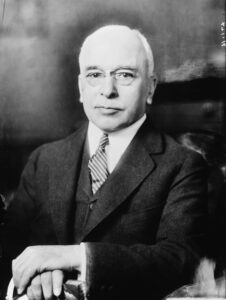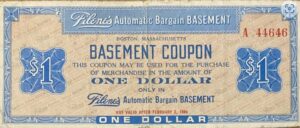By Sharon Oliver, Contributing Writer

BOSTON – Long before there were suburban shopping centers or malls, consumers took to the downtown areas of major cities for their shopping needs and outings. Large department stores were once the crowning hallmark of cities across America. In fact, Boston was the first to set a prime example. The city was not only the first to offer a department store but had three of the finest of their time. Filene’s, Gilchrist’s and Jordan Marsh were landmarks of Downtown Crossing.
Moreover, Filene’s department store not only carried on a tradition of being a first but also has a rich history. Opened in 1890 by William Filene, the store got its start as Filene’s Sons and Company in 1881, selling fancy goods and women’s ready-to-wear apparel. Sons Edward and Lincoln made the retail giant into a household name after inheriting the store in 1901. President Franklin D. Roosevelt’s son John worked in the basement as a stock boy in 1933. The first $11 men’s suit sale, a hugely popular event even when the price went up to $99 in later years, was held in 1937. Designs by Coco Chanel and Elsa Schiaparelli were shipped in from war-torn Europe in 1940, and in 1947, the “Running of the Brides” bridal gown sale phenomenon was born.
Bargain basement pioneer

After William Filene’s son Edward took over, he introduced the concept of “bargain basement” pricing for local consumers. Their markdown system was defined by marking the tag on a piece of merchandise with the date it was first put on sale. If not sold within 12 days, it was reduced by 25 percent. Six selling days later, it was then cut by 50 percent and after an additional six days, it was offered at 75 percent off the original price.
After six more days—or a total of 30—if still not sold, then the item is given to charity. However, 90 percent of the goods sold were purchased within the first 12 days of sale. Filene’s Basement became wildly popular with bargain seekers, and the markdown sales idea was adopted by several department stores across the nation.
Many local shoppers may also recall the crazy days in Filene’s Basement when the men’s and women’s dressing rooms were communal. This meant a bunch of total strangers were undressing and dressing in front of each other to try on clothing in one big space. But that was an improvement from the days when there wasn’t even a women’s dressing room and women, particularly during especially frenzied sales, would sometimes disrobe and try clothes on in the aisles. Some veteran shoppers prepared accordingly and would wear a bathing suit under their clothes to keep the peep show G-rated.
Legendary bridal gown sale
Perhaps one of, if not the most memorable thing about Filene’s, is when brides-to-be laced up their sneakers and it was ready, set, shop (mob) the place due to their bridal gown sales, better known as the “Running of the Brides.” Hundreds of women filled with adrenaline seized the attention of the local media while grabbing as many gowns their arms could hold for this one-day sale. It was pretty much guaranteed to be featured in the city’s newspapers and at least one evening television news broadcast every year.

For several decades in the late 20th century, Filene’s expanded into numerous locations around New England, typically in suburban shopping malls. The chain’s star began to dim in the first years of the 21st century. In 2006 the Filene’s brand was retired and most of its stores became Macy’s stores, another chain owned by its parent company, Federated Department Stores.
Historical legacy
Filene’s shuttered flagship store in Boston’s Downtown Crossing is listed in the National Register of Historic Places. In the 2010 documentary “Voices From the Basement,” late investigative journalist Mike Wallace called the department store “an important part of our heritage.” Adding to the conversation, former Boston mayor Thomas M. Menino stated, “I loved going to the Basement, going through all the shirts they had, the ties, the suits to find a deal.”
Dubbed the “Father of the American Credit Union System,” Edward Filene also formed a savings and loan association for employees which later became the Filene Employee’s Credit Union and pioneered credit unions across the U.S. He was inducted into Merchant’s Hall of Fame in Chicago in 1956 and credited with the creation of the “automatic markdown” sale system.
RELATED CONTENT:
‘Spag’s’ – a Shrewsbury retail institution for more than half a century (fiftyplusadvocate.com)
The Massachusetts man who created America’s doughnut habit (fiftyplusadvocate.com)
How Earl Tupper turned one product into a household name (fiftyplusadvocate.com)












